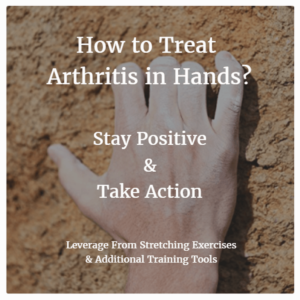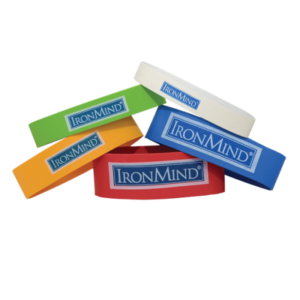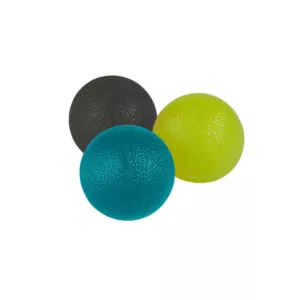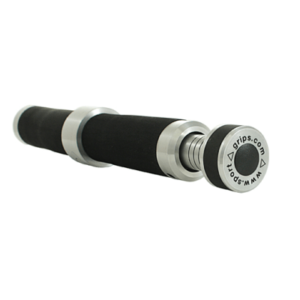(Last Updated on May 11, 2024 by Henry)
Treatment for Arthritis in Hands –
What to do to ease pain? How much effort does it take to treat arthritis in the hands?
There are many parts to it & it’s excellent if you start asking those questions. It means you’re getting ready to make some significant changes to fix things up.
Well, a lot depends on you. If you want to make a difference in the long run, you can. First & foremost, you always want to do your best to maintain a positive attitude.
Dealing with arthritis is rather a process than seeking a sudden change overnight. Fortunately, there are multiple ways how you can boost your hand health.
How to Start Treating Arthritis – Stay Positive & Take Action
Arthritis Can Affect Any Joint in Body – How to Treat Arthritis in Hands?
Let’s Break it Down into 5 Stages:
- 1st Step – Anti-inflammatory drugs – Using both OTC medicine & prescribed drugs if necessary – To get inflammation under control & reduce swelling in tendons, joints & soft tissue.
- 2nd Step – Physical therapy – Exercise, exercise, exercise! Once the pain is gone, being active helps & is an excellent way to go. Muscle is a cushion that supports & protects your joints = Less pain.
- 3rd Step – Using splints – Doing everything you can to keep good posture & protect joints is a very smart move. It helps your joints to sit in the correct position & prevents further injuries.
- 4th Step – Corticosteroids – Both oral & injectable. IF previous steps won’t help well enough, this is a possible good option & one of the last resorts before surgery to get relief from pain.
- 5th Step – Surgery – If nothing else helps, the injury & trauma are causing too much pain & are not responding to regular physical therapy, for various reasons, surgery can be a good option.
It’s already a scientifically proven way to effectively strengthen your body, including your entire immune system against arthritis. Having an upper hand is never a bad thing, isn’t it?
Let’s leverage from it. Having a positive mindset not only helps you to stay on track but gives you an extra boost in anything you do. Remember, even more importantly, it’s essential to pair it up with physical training.
It’s important to take action! It’s important to set plans, stand up, get going, & keep yourself busy to make a difference. Will it be easy? No. Will it be worth it? Absolutely. Ask any rheumatologist out there & they would tell you that, what you need to do is rest, but not too much.
Go ahead, rest up & then it’s time to take action. No excuses here. It’s good in the long run to prevent further stiffness, fatigue & joint pain. Daily exercises are mandatory. Doesn’t matter how severe your case is, or what type of arthritis you are facing, you’re not alone in this & you can always do something for yourself & improve.
Leverage from More Muscle & Functional Strength
Muscle is Like a Cushion
What we want to achieve here is not getting you on the Olympia stage, but to achieve more functional strength. Every little bit you add goes a long way, to live a full, active life.
You can start with gentle flexibility exercises for warm-up & simple stretching. It’s a good idea to go from there. Along the way, it’s smart to accommodate your body accordingly, and keep testing, what can you do & how can you do it.
Keep testing, what works for you & what doesn’t. It’s normal that everybody is a bit different & responds differently to different exercises – Let’s discover what works best for you. Once you feel better, don’t hesitate to add intensity – It’s time to step it up with strengthening exercises.
Muscles are designed to protect & reinforce your body. Having more muscle can result in less joint pain. More muscle mass helps to take some of the unnecessary pressure off from joints – It acts like a cushion for your joints. Building stronger muscles around your joints can help to protect your tendons & contribute to overall well-being.
There are plenty of simple, yet effective exercises – Something for every occasion & every taste. I’ll also show you equipment on how to strengthen your forearms & grip. Such as rubber bands & wrist-rollers. Let’s take a closer look at different forms of arthritis – The most common types & how can you recognize them. Once you know what you’re dealing with, it’s much easier to heal.
How Many Different Forms of Arthritis Are There?
Over 100 Different Forms of Arthritis
There are well over 100 different forms of arthritis & related diseases. The large number of varieties means that each case likely shares similar qualities & at the same time can be unique. The Top 8 Most Common Types of Arthritis include:

- Osteoarthritis (OA),
- Rheumatoid arthritis (RA),
- Psoriatic arthritis (PsA),
- Fibromyalgia (Fibrositis)
- Gouty Arthritis (Gout)
- Systemic Lupus Erythematosus (SLE)
- Back pain-related arthritis
- Other Musculoskeletal Pain
About 25% of people who are affected by these types of related diseases say that it causes severe pain. Described on a 10-point scale it’s 7 or higher. Let’s also take a closer & more detailed look on most common types of arthritis:
Causes & Symptoms of Common Types of Arthritis
Being Active is Important to Stop Arthritis
Start Light & Go from There
Once you get inflammation under control – Exercise, exercise, exercise! This is a possible shortcut to stop arthritis from progressing. Here are some more warm-up exercises & stretches you can do at home, plus some hand training exercises that are paired up with specific grip training equipment, like rubber bands & wrist rollers, that are really easy to obtain.
Remember, being active is the key to feeling better – Start light & go from there. Pair this up with a positive attitude & once you’re familiar with the process, do not be afraid to up your game. At this point, it will be a good time to start looking for additional training equipment that you can pair up with your training routine. You should always remember, that overuse of muscles as well as lack of exercise are both important make or break factors.
What Training Equipment Should You Get to Treat Arthritis in Hands?
Warm-Up, Stretching & A bit Progression
First & Foremost, your training equipment to treat hand arthritis should cover basic warm-up exercises.. something that provides you with plenty of options for versatile & flexible workouts. Meanwhile, it should be something that helps you with stretching as well as gives a moderate workload to train your hand muscles along the way.
Your hand recovery training tools should also include several different resistance levels so you have room for progression or a way to go easier if the one you are using is too much for you. Better if it’s on the easy side than just overwhelming. Having a set of tools means having multiple options, so you can achieve your recovery goals quickly & effectively.
Simple hand bands are the best ones out there. You should own a pair no matter what. No better way to build muscle balance & work your hand extensor muscles than using simple rubber hand bands.
Using hand bands requires no more than a couple of minutes of your time per day. They’re very easy to use, fun & have long-term benefits if you’re using them on a regular basis.
On top of that, rubber hand bands are very easily portable – Put one around your wrist or throw it into your pocket. In that way, you’ll never miss your hand therapy session. You can do it wherever you want, whenever you need to do it.
Rubber Exercise Balls are excellent, universal & one of the most common approaches for hand therapy. Arthritis, dislocated fingers, recovery from stroke, or weak hands that need tuning up.
Using rubber exercise balls is a big part of your regular hand therapy. You can squeeze, and clench as well and do adduction movements with all fingers, including your thumbs. Rubber exercise balls can be used to build crush grip strength as well as use them to build pinch grip.
It’s a great way to tune up your thumb strength & rest of the fingers flexor muscles along the way. Also highly recommended to warm up before starting the hand gripper training session.
An adjustable wrist roller is useful. Compared to regular wrist-rollers, adjustable one uses neither rope nor weight plates.
This is ideal for rehab purposes. It’s designed in the way it moves in one motion. It’s smooth & there are no weights on a rope that you can drop that could cause further injury.
If there’s anything you want to avoid doing with arthritis, it’s sudden moves. The more fluent your actions are, the better for your joints. Adjustable roller resistance levels begin with virtually no resistance, making it a great rehab tool in multiple cases.
Remember to Use Braces, Sleeves & Splints – Excellent Way to Protect Your Joints
Protect Your Joints
Do not miss that one! It’s very beneficial to use one. A lot of folks tend to neglect this part for some reason. Don’t become one of those folks. It’s already a scientifically proven method to help you significantly speed up the recovery process.
Using a sleeve or splint, wrist or elbow brace is like building an additional joint for your existing joints that protects your body & lets overused joints rest.
Taking the load off the inflamed joint helps to get the inflammation down & lets the affected joint heal faster.
If anything at all, avoiding further complications should be your top #1 priority. Avoiding additional traumas through protection is smart.
In addition to healing, using splint-like devices helps you to keep symptoms from progressing.
As each case is unique, you should go ahead & give it a try to several different products to see which one is working for you. The brace or sleeve should be comfortable, and tight enough to secure the position, but it also shouldn’t squeeze the arm too much.
You must try to find the balance, to make it effective for you. Whether you go with a brace, sleeve, or splint. It would be wise to invest in one of these devices & see which one accommodates your body most beneficially.
Your #1 Priority Should Be On Muscle Balance
Many Folks, if not Vast Majority, Have Unbalanced Forearm Muscles… Why?
Work Your Hand Extensors
The vast majority of folks NEVER work on their forearm extensor muscles. This is a recipe for disaster. If we throw arthritis on top of it, it’s adding fuel to the fire so to speak.. in a very bad way. How to fix this problem?
Simple rubber hand bands are great. They’re inexpensive & easy to obtain. If physical therapy is something you’re able to do, start with this. It has a lot of potential to reduce pain caused by arthritis.
Muscle Balance is the absolute #1 priority for getting stronger & healthier hands. More balanced muscles in the hands help to take pressure off the joints. Equalized muscle leads to less pain because muscle acts like a cushion for your joints.
Thanks for Stopping By
Have Questions?
Please Leave A Comment





I’m finding it’s not just the elderly affected by this, there are a lot of young people getting arthritis too.
I have a friend, middle-aged who has rheumatoid arthritis and she has amazing positive mental attitude.
She does exercise, some days are not good so she’ll focus more on stretches. She actually uses the rubber exercise balls or similar and swears it’s the best ever.
I try to do research for her and so I’ll be passing your post to her so she can learn more.
Thanks for an awesome post!
Pretty much everybody is sitting behing computer screen all the time, every single day.
Arthritis is having a field day year round, affecting millions of people around the globe.
However, little bit of exercising combined with positivity gives us a shield to fight back.
Wonderful to hear & see that your friend is setting us an inspiring example.
Wow this is great, my mother has severe arthritis in her hands, so this is really interesting for me to read about. I knew about the 5 steps you mentioned, but being positive strengthens the immune system is really new information to me. Is that an actual fact or is it based on theory?
Eitherway I’m definitely passing this on to my mum’s I know she will find support in this article.
Thanks alot!
Absolutely Marley, controlling your emotion influences you to the very core on subconscious levels.
It doesn’t mean focusing on laughing so hard non stop that you have hiccups every three minutes but rather having a healthy, positive outlook that assists you to carry on & face the odds.
Experiencing continous negativity creates stress that in turn leads to multiple common undesirable health conditions such as low moral, anxiety & eventually chronic depression.
Use every opportunity to keep your head up. Blessings to you & your mum.
My partner has just been diagnosed with R.Arthritis in her hands and is on medication. It’s the pain killers which worry me. Don’t want her to get hooked.
She is in her sixties and is very fit. Runs 3X a week at least, practises pilates and walks briskly for 45 mins every single day. Is also very careful about what she eats.
So she is managing the r.arthritis extremely well. I am a little concerned about the painkillers but she is very good and takes them only when she feels it’s necessary.
Thank you for a highly informative website. Made extremely interesting reading.
Thank you for positive feedback. It’s nice to hear you & your partner are handling rheumatoid arthritis like a champion.
I hear you, can’t get too crazy with pills & occasional tox screen, blood tests are important to monitor health.
The way you describe situation I have a feeling you’re already doing all of that. I am glad you stopped by, wishing you all the best.
Wonderful post. Great video’s I have arthritis in my hands, I tried the videos and it did loosen my hands up
Thank you for that. 🙂 The articles themselves are also written very well. Nice job!
People don’t understand how painful arthritis can get unless they have it unfortunately and having it in your hands is horribly painful.
Thanks for stopping by to let us know you’ve found some practical value here.
It’s typical to human nature, nobody is busy thinking about pain they could or wouldn’t ever have someday.
At least we’re somewhat prepared when the outbreak of that kind of happens.
Hi Henry, Great article, I’ve found it very useful!
Since I work a lot with my computer, my fingers hurt a lot, which makes it often difficult to write. I’ve tried almost everything. I bought ergonomic mouse and keyboard. I eat healthily and walk fast at least 50 minutes every day. It helped me a bit, but I still have pains in my fingers.
I’ve never gone to a Doctor to diagnostic the problem because I am afraid to hear the result:) I will try these exercises shown on the video. I’ve been told that wrist support will help.
What do you think about wearing them on both hands while working on my computer? Will it help? Thank you in advance!
Since you’ve tried almost everything, I’d say you simply need more down time to rest your fingers.
That could be it. I’m afraid you won’t get enough rest hence the continuing pain, it keeps feeding RSI.
Shorter, more calibrated sessions behind computer, more breaks & being more away from screen if it is a possibility for you to simply let your fingers recuperate. Wrist braces, along with your ergonomic mouse & keyboard is functional option to maintain better posture. Worth trying.
More importantly get rubber hand bands & do light exercises for extensor muscles to build muscle balance. Counter movements help to stretch, promote blood flow in area & loosen cramped up muscles in your hands that you use on computer all day long.
Henry, I watched the first video and then did those exercises while reading the rest of your article. I had to do similar exercises after I broke my wrist.
I am going to come back and try the other videos very soon.
I’d like to hear how it goes for you
Let me know if you need help with anything
Honestly, if it is rheumatoid arthritis or another autoimmune problem causing the joint pain, you really need to straighten the immune response problem out so that the body is not attacking itself anymore.
Anti-inflammatory drugs merely mask the problem. There is an immune supplement that will get the system working properly in about 8 weeks for most sufferers of autoimmune symptoms, and I hope you would share it with your readers.
Thanks!
That would be the ultimate solution indeed. If it only was that simple. Autoimmune disease is not directly mechanical problem but rather a blood pathogen that needs to be addressed.
Meanwhile we seek long term solution, it’s also important to focus on & understand the necessity of temporary fixes. The difference is, if masking the problem is used to potentially buy time to treat underlying conditions.